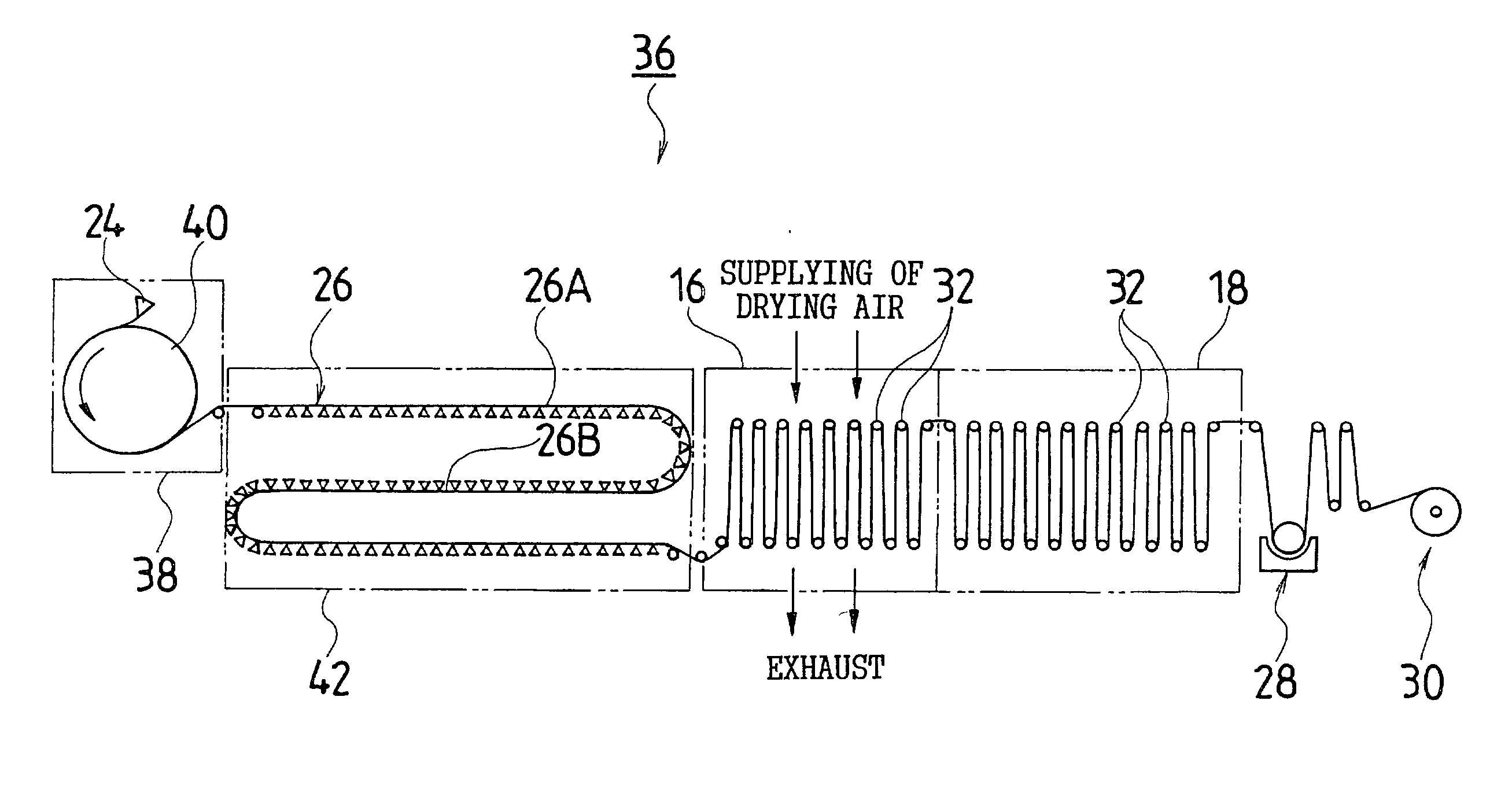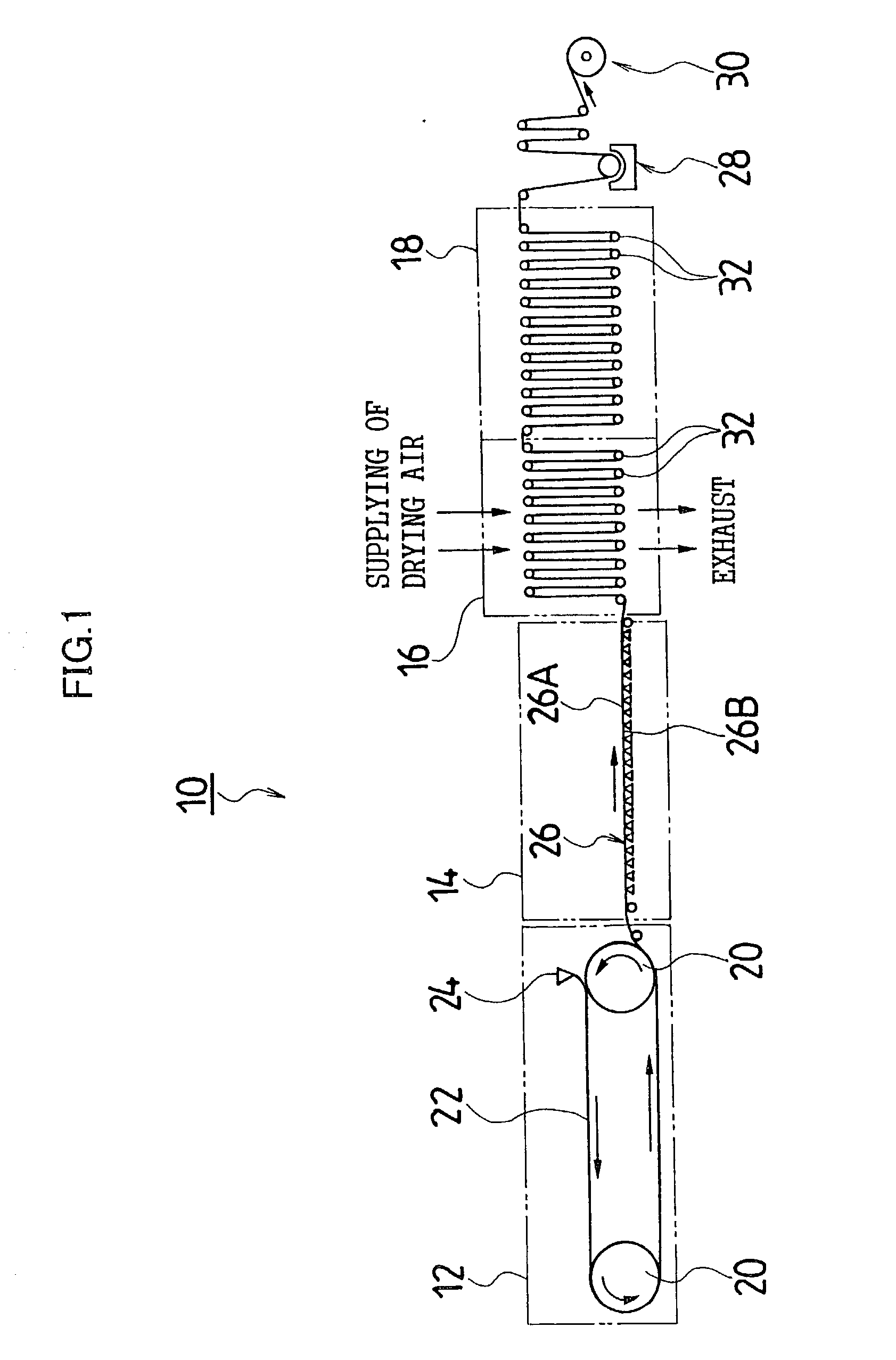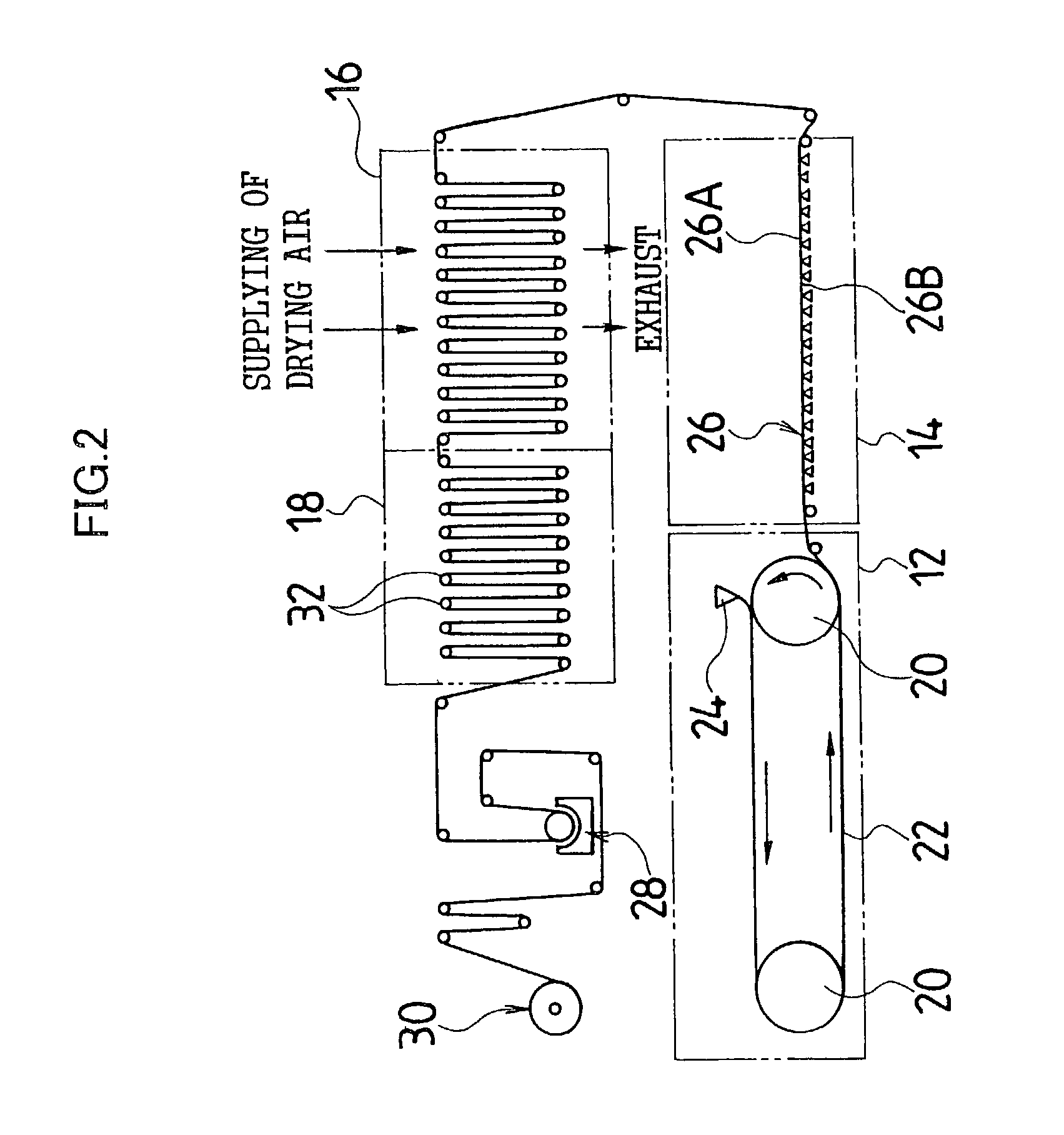Cellulose acylate film and polarizing plate using the same
- Summary
- Abstract
- Description
- Claims
- Application Information
AI Technical Summary
Benefits of technology
Problems solved by technology
Method used
Image
Examples
Embodiment Construction
[0043] As Examples 1 and 2 and Comparative Examples 1 and 2, films having different characteristics were manufactured and subjected to saponification, and then used for fabricating polarizing plates. The followings are conditions of manufacturing respective films, conditions of preparing dopes, conditions of saponification, and conditions of fabricating the polarizing plates.
Film Manufacturing Conditions of Example 1
[0044] Using the manufacturing apparatus 10 shown in FIG. 1, a dope A was flow-cast to manufacture the film 26. That is, the dope A was extruded from the die 24 and was flow-cast on the band 22, and after the dope A was dried until the self-supporting property was imparted thereto, the film 26 was stripped off from the band 22 and introduced into the tenter drying part 14. A volatile content at the time of stripping was 66%.
[0045] In the tenter drying part 14, drying air having a temperature of 130.degree. C. was supplied to each side of the film 26, and the maximum spee...
PUM
| Property | Measurement | Unit |
|---|---|---|
| Temperature | aaaaa | aaaaa |
| Temperature | aaaaa | aaaaa |
| Thickness | aaaaa | aaaaa |
Abstract
Description
Claims
Application Information
 Login to View More
Login to View More - R&D
- Intellectual Property
- Life Sciences
- Materials
- Tech Scout
- Unparalleled Data Quality
- Higher Quality Content
- 60% Fewer Hallucinations
Browse by: Latest US Patents, China's latest patents, Technical Efficacy Thesaurus, Application Domain, Technology Topic, Popular Technical Reports.
© 2025 PatSnap. All rights reserved.Legal|Privacy policy|Modern Slavery Act Transparency Statement|Sitemap|About US| Contact US: help@patsnap.com



